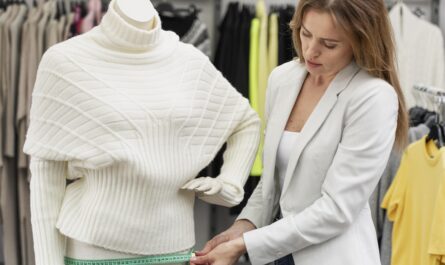Our closets are often overflowing with garments that no longer fit, have gone out of style, or simply collect dust. Instead of sending these items straight to a landfill, why not give them a second chance? Repurposing and upcycling are transformative processes that convert old clothing into something new, useful, and even trendy. Whether you’re an avid DIYer or just looking for a sustainable way to manage your wardrobe, the world of upcycling offers endless possibilities for creativity, savings, and environmental impact.
What Is Upcycling and How Is It Different from Recycling?
Upcycling involves taking items that are considered waste and transforming them into products of higher value or quality. Unlike recycling, which typically breaks down materials to their raw state for remanufacturing, upcycling preserves much of the original fabric while adding a new twist. For instance, an outdated denim jacket can be turned into a stylish bag or repurposed as patchwork art. This process not only reduces waste but also extends the lifecycle of clothing, reducing the demand for new raw materials.
Repurposing, on the other hand, refers to converting clothing into something entirely different. This might mean using old shirts to create cleaning rags, turning vintage dresses into cushion covers, or even crafting quilts from discarded textiles. Both upcycling and repurposing celebrate creativity while embracing a sustainable, circular approach to fashion.
The Benefits of Upcycling Your Clothes
Before diving into ideas, it’s worth considering why upcycling is so appealing. Here are several key benefits:
- Environmental Impact: Fast fashion is one of the largest contributors to global waste, with millions of tons of textiles ending up in landfills each year. By upcycling, you reduce waste, conserve resources, and help lower carbon emissions associated with producing new garments.
- Economic Savings: Instead of spending money on new items, upcycling lets you refresh your wardrobe using what you already own. It’s a budget-friendly way to experiment with trends or update your style.
- Unique Style: Upcycled clothing is inherently one-of-a-kind. When you create something new from old pieces, you’re not only saving the environment but also crafting a look that reflects your personal creativity and individuality.
- Skill Building: Learning to mend, alter, and design garments develops valuable DIY skills. Even if you’re a beginner, simple projects can build confidence and spark a lifelong passion for sustainable crafting.
- Cultural Connection: Upcycling often involves preserving pieces that carry personal or sentimental value. Transforming a vintage dress or an old concert tee into a modern accessory can help keep memories alive in a fresh and stylish way.
Getting Started: Tools and Tips for Successful Upcycling
Before you begin transforming your clothing, consider a few essential tools and tips to help you along the way:
- Basic Sewing Kit: A sewing machine, needles, thread, fabric scissors, pins, and a measuring tape are the foundational tools for any upcycling project.
- Iron and Ironing Board: Pressing fabric before and after alterations ensures a clean, professional finish.
- Templates and Patterns: Use simple patterns or create your own templates to maintain consistency in your projects.
- Creativity and Patience: Allow yourself to experiment. Not every project will be perfect on the first try, but each attempt builds your skills and style.
- Online Tutorials: From YouTube channels to DIY blogs, many resources can guide you through every step of a project—from repurposing t-shirts into bags to transforming old jeans into chic skirts.
Creative Ways to Repurpose and Upcycle Your Clothes
Let’s explore some innovative projects that will inspire you to give your old garments a fresh start.
1. Transform T-Shirts into Tote Bags
Old t-shirts are perfect for creating reusable shopping bags—a great way to cut down on plastic waste. Simply cut off the sleeves and neckline, sew the bottom closed, and add sturdy handles (which can also be made from fabric scraps). This simple project turns your favorite tees into eco-friendly totes that you can use for groceries or everyday errands.
2. Revive Denim with Patchwork
Denim is one of the most durable fabrics around, making it ideal for upcycling. Consider creating a patchwork jacket or even a stylish pair of shorts from old jeans. The process involves cutting the jeans into various shapes and sewing them together in an eye-catching pattern. Not only does this create a unique piece, but it also highlights the rugged, timeless appeal of denim.
3. Design a Quilt from Unworn Favorites
If you have several sentimental pieces—like band tees or childhood shirts—why not stitch them together into a cozy quilt? This project not only saves precious memories from being discarded but also results in a functional keepsake that can be passed down through generations.
4. Craft Trendy Accessories
Upcycling isn’t limited to large projects. Small accessories, such as headbands, bracelets, or even patchwork belts, can add a creative touch to your outfits. For example, cut strips from a patterned shirt and braid them into a unique bracelet, or turn an old scarf into a fashionable headband.
5. Repurpose Dresses into Skirts or Tops
When a dress no longer fits your style or body, it doesn’t have to be thrown away. With a few modifications, you can convert an old dress into a new top or a shorter skirt. This might involve removing layers, shortening the hemline, or adding embellishments like lace or buttons to create a fresh, modern look.
6. Create Functional Home Décor
Extend the life of your clothing by transforming them into home décor. Turn oversized sweaters into cozy throw pillows, use old shirts to line drawers or shelves, or even fashion fabric into decorative wall art. These projects are not only environmentally friendly but also add a personal touch to your living space.
7. Upcycle into Cleaning Rags and Reusable Wipes
Not all upcycling projects need to be glamorous. Transform worn-out garments into practical cleaning rags or reusable kitchen wipes. Cut the fabric into squares and hem the edges for durability. This simple step reduces waste while also providing a cost-effective solution for household cleaning.
8. Design Customized Pet Accessories
Your furry friends can benefit from your upcycling efforts too. Old t-shirts or sweaters can be turned into pet beds, bandanas, or even small toys. Not only will your pet have a cozy new accessory, but you’ll also be reducing waste by finding a second life for your unused clothes.
9. Make Statement Jewelry or Embellishments
For those who love a bit of sparkle, consider using fabric remnants to create unique jewelry. Fabric-covered buttons, for instance, can become earrings or brooches, and small pieces of embroidered fabric can be set into pendants. This approach adds a tactile, personalized element to your accessory collection.
10. Reconstruct Vintage Clothing for a Modern Twist
Reconstructed clothing is a growing trend in the fashion world. Designers take vintage garments and reassemble them into modern pieces. At home, you can try your hand at reconstructing a vintage blouse or pair of trousers into something entirely new. This might involve deconstructing the item, re-cutting the fabric, and reassembling it into a modern silhouette.
DIY Projects: Step-by-Step Inspiration
Here are two detailed project ideas to get you started on your upcycling journey.
Project 1: Upcycled T-Shirt Tote Bag
Materials Needed:
- One old t-shirt (preferably in good condition)
- Scissors
- Sewing machine or needle and thread
- Fabric marker
- Ruler or measuring tape
Instructions:
- Prepare the T-Shirt: Lay the t-shirt on a flat surface and smooth out any wrinkles. Using a fabric marker and a ruler, mark the neckline, sleeves, and bottom hem.
- Cut Out the Bag Shape: Remove the sleeves and neckline carefully to create a large rectangular piece of fabric. You can decide on the size based on how large you want your tote bag to be.
- Hem the Edges: Fold over the edges by about half an inch and pin them in place. Use your sewing machine (or hand stitch) to sew along the edges, reinforcing the seams.
- Add Handles: Use fabric from the removed t-shirt parts or another scrap to create handles. Cut two strips of fabric approximately 1.5 inches wide and 20 inches long, then fold them lengthwise and sew along the long edge. Attach the handles securely to the top of your bag.
- Finishing Touches: Iron the bag to flatten the seams and give it a crisp finish. Your upcycled tote bag is now ready to use!
Project 2: Patchwork Denim Shorts
Materials Needed:
- A pair of old jeans (preferably with some distressed areas)
- Fabric scissors
- Sewing machine or needle and thread
- Pins
- Optional: Decorative patches or embroidery thread
Instructions:
- Plan Your Design: Lay the jeans flat and decide which parts you want to keep and which parts you’ll replace with patches. Mark cutting lines lightly with a fabric marker.
- Cut Out Patches: Carefully cut away any damaged or faded areas. Save these pieces if you plan to use them as part of the patchwork design.
- Rearrange and Pin: Lay out the remaining denim pieces on a flat surface to create a new pattern. Pin the pieces together to visualize the new design.
- Sew the Pieces Together: Use your sewing machine to stitch the pieces together along the seams. For a more creative look, try varying the stitches or adding decorative elements such as embroidery.
- Finish the Edges: Once assembled, finish the raw edges with a zigzag stitch or by applying bias tape to prevent fraying.
- Alter the Fit: Try on the shorts and make any necessary adjustments. Hem the bottom if needed, and your unique pair of patchwork denim shorts is complete.
Advanced Upcycling Techniques for the Experienced DIYer
If you’re ready to take your upcycling skills further, consider these advanced techniques:
1. Fabric Dyeing and Printing
One way to completely transform an item is by changing its color or adding a pattern. Fabric dyeing, tie-dye, or even using fabric paints can breathe new life into a faded garment. Experiment with natural dyes, such as beetroot or turmeric, for an eco-friendly option. This technique works wonders on items like t-shirts, scarves, or even jeans.
2. Visible Mending and Embroidery
Visible mending is an artful way to repair garments while making a fashion statement. Instead of hiding repairs, let them become a part of the design. Use contrasting threads and creative stitching patterns to mend holes or tears. Embroidery can add texture and detail, turning a simple repair into an intricate design feature.
3. Appliqué and Fabric Collage
For a more artistic approach, try appliqué—sewing smaller pieces of fabric onto a larger base garment to create a collage effect. This technique is ideal for jackets, bags, or even dresses. Mix different textures, patterns, and colors to create a piece that is truly one-of-a-kind. The result is a visually striking garment that tells a story through its patchwork design.
4. Deconstruction and Reconstruction
Reconstructed clothing involves completely deconstructing an item and then reassembling it into a new form. This might mean taking apart a dress to create a two-piece set or transforming a suit jacket into a vest. This method requires patience and a good eye for design, but the end result can be a sophisticated, high-fashion piece that merges old with new.
Tips for a Successful Upcycling Journey
- Start Small: If you’re new to upcycling, begin with simple projects like converting t-shirts into bags or rags. As you build confidence, move on to more complex projects.
- Embrace Imperfection: Not every project will be perfect. Some pieces might have quirky details or asymmetrical designs that add charm. Embrace these imperfections as part of the upcycled look.
- Keep Your Inspiration Handy: Save ideas from Pinterest, DIY blogs, and YouTube. Create a mood board or a digital folder of projects that inspire you.
- Invest in Quality Tools: Good-quality scissors, a reliable sewing machine, and sharp needles can make a huge difference in your project’s outcome.
- Learn and Experiment: Attend local workshops or join online communities dedicated to upcycling. Sharing your progress and learning from others can spark new ideas and techniques.
- Be Patient: Upcycling takes time and sometimes multiple attempts before you get it right. Enjoy the process and learn from each project.
The Future of Upcycling in a Circular Economy
The movement toward upcycling is more than just a trend—it’s a necessary shift in our approach to consumption and waste. As consumers become more aware of the environmental impact of fast fashion, the demand for sustainable alternatives continues to grow. Upcycling supports a circular economy, where products are designed to be used for as long as possible, repurposed, and eventually reintegrated into the production cycle rather than discarded.
Innovative fashion designers and brands are increasingly incorporating upcycled elements into their collections, proving that sustainability can go hand in hand with high fashion. By repurposing existing materials, they reduce the need for new raw materials, cut down on waste, and often create garments that are more durable and unique. This trend not only benefits the environment but also challenges traditional notions of beauty and value in fashion.
Furthermore, upcycling encourages us to see value in what we already own. Rather than succumbing to the constant pressure of buying new items, upcycling teaches us to appreciate the craftsmanship and history embedded in each garment. It’s about reimagining what is possible, pushing the boundaries of design, and ultimately crafting a lifestyle that values creativity and sustainability over mass production.
Conclusion
Repurposing and upcycling your clothes is an empowering way to contribute to a more sustainable world while expressing your creativity. From transforming old t-shirts into eco-friendly tote bags to reinventing denim into chic patchwork shorts, there are countless ways to give your wardrobe a new lease on life. This process not only minimizes waste and reduces your environmental footprint but also allows you to create unique, personalized items that stand out from mass-produced fashion.
As we face the environmental challenges of fast fashion and overconsumption, upcycling offers a practical, stylish, and creative solution. Whether you’re a beginner just testing the waters with simple projects or an experienced DIYer ready to tackle advanced techniques like visible mending and reconstruction, upcycling transforms the way we interact with our clothing—and by extension, the way we value our resources.
By taking the time to repurpose and upcycle, you’re not only saving money and reducing waste; you’re also embracing a lifestyle that values sustainability, creativity, and individuality. So, next time you find an old pair of jeans or a tattered t-shirt, remember: with a little imagination and effort, it can be reborn as a unique piece that’s both beautiful and eco-friendly.
In a world where environmental challenges are increasingly pressing, each small step counts. Upcycling your clothes is a powerful way to make a difference—one stitch at a time. So, roll up your sleeves, gather your supplies, and start transforming your unwanted garments into treasures that not only tell your personal story but also contribute to a healthier planet.



